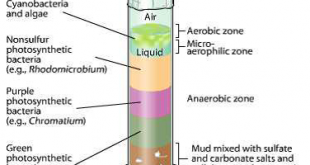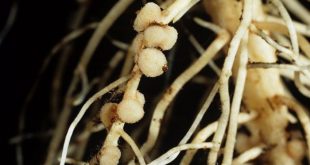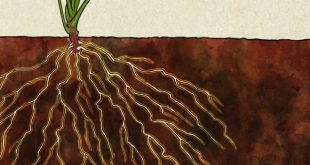Red rot of Sugarcane Red rot is one of the major diseases of sugarcane found in many areas of the world. It was first described in 1983. Pathogen Colletotrichum falcatum Get Free Netflix Now Best safe and secure cloud storage with password protection GPL Themes For Free Get Envato Elements, …
Read More »Disease of Wheat: Black Rust and Loose Smut
Black rust of wheat Host Triticum aestivum Pathogen Puccinia graminis-tritici Symptoms Rust infection is observed in leaves, leaf sheaths, stems, floral structures in the form of rust pustules. Reddish brown pustules appear during the formation of urediniospore. Black pustules appear during the formation of teliospore. On maturity, the teliospore …
Read More »Pathogenicity Test: Diagnosis of an Unknown Fungal Disease
For diagnosis of plant disease, it is essential to determine whether the disease is caused by a pathogen or an environmental factor i.e. abiotic factor. It is also important to know whether the disease is infectional or non-infectional. Diagnosis of a disease caused by either a virus, viroids, rickettsia or …
Read More »Importance of Crop Disease in Agriculture
Plant diseases affect the existence, adequate growth and productivity of all kinds of plants. A diseased plant is a plant that cannot carry out all the physiological functions. So, the importance of plant diseases in the agriculture sector is very significant. In the developing countries, 50-80% of the population is …
Read More »Classification of Plant Diseases
Based on causal agents Infectious or biotic plant diseases. Non infectious or abiotic plant diseases or physiological disorder. A. Infectious diseases A disease that is caused by pathogens which can spread from a diseased to a healthy plant. They are caused by animate factors. Viral disease: Witches broom. Bacterial disease: …
Read More »Difference between: Environmental Microbiology
This series includes the difference table between Habitat and Niche Autochthonous and Allochthonous Neuston and Pleuston Extremophile and Extremozyme Habitat Niche A habitat is an ecological or and environmental area that is inhabited by a particular animal, plant or other types of organisms. A niche is a term describing the …
Read More »Winogradsky Column
The Winogradsky column is a simple device for culturing a large diversity of microorganisms. Invented in the 1880s by Sergei Winogradsky, the device is a column of pond mud and water mixed with a carbon source such as newspaper (containing cellulose), blackened marshmallows or egg-shells (containing calcium carbonate), and a …
Read More »Nitrogen Fixation & Root Nodule Formation
Nitrogen fixation is a process by which molecular nitrogen in the air is converted into ammonia (NH3) or related nitrogenous compounds in soil. Atmospheric nitrogen is a relatively nonreactive molecule that is metabolically useless to all but a few microorganisms. Biological nitrogen fixation converts N2 into ammonia, which is metabolized by …
Read More »Nitrogen Cycle: Converting Nitrogen into Multiple Chemical Forms
The nitrogen cycle is the biogeochemical cycle by which nitrogen is converted into multiple chemical forms as it circulates among the atmosphere, terrestrial, and marine ecosystems. The conversion of nitrogen can be carried out through both biological and physical processes. Important processes in the nitrogen cycle include fixation, ammonification, nitrification, …
Read More »Rhizosphere & Its Effects
Positive and negative interactions take place not only between microbes but also between microbes and plants. The rhizosphere is a zone of predominantly commensal and mutualistic interactions þetween microbes and plants. Plant roots provide such suitable habitats for the growth of microorganisms that high numbers of different microbial populations are …
Read More » Plantlet The Blogging Platform of Department of Botany, University of Dhaka
Plantlet The Blogging Platform of Department of Botany, University of Dhaka





